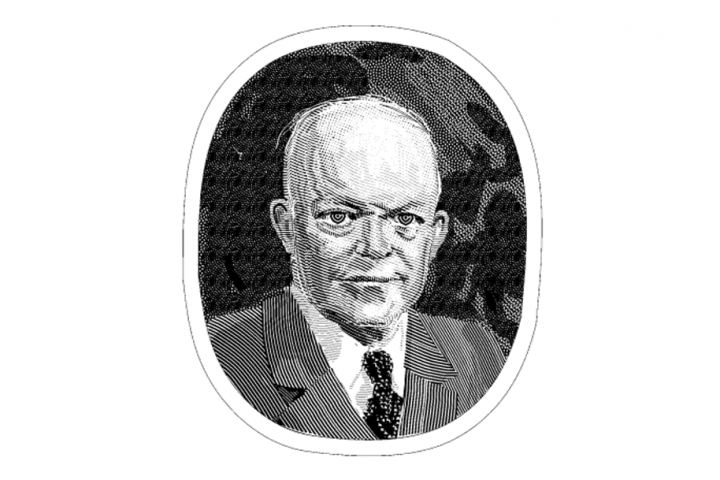Books Reviewed
A review of The Upside-Down Constitution , by Michael S. Greve
, by Michael S. Greve
Ever since his arrival at the American Enterprise Institute in 2000, Michael Greve's copious writings have attracted, instructed, provoked, and entertained a legion of followers. Although formally trained as a student of government with a Ph.D. from Cornell, he directed a conservative public-interest law firm for a number of years and learned how to hold his own against the lords of the legal academy. He reads widely and well across a broad range of disciplines, including political science and history, and, among other things, has shown himself to be a talented armchair political economist. He is, moreover, a powerful, eloquent, and lively writer who is always a delight to read.
All of these talents, and more, are on abundant display in The Upside-Down Constitution, Greve's engaging, erudite commentary on American law and politics, which ought to rattle more than a few cages—especially among those who earn their living opining about the meaning and matter of the U.S. Constitution. His chosen medium of instruction is the jurisprudence of modern federalism, which, he argues, not only misunderstands but inverts the Constitution's architectonic purpose—hence the book's title. The broader question that lies at the heart of his inquiry is this: how is it that a Constitution erected as a bulwark against the mischiefs of faction has morphed into an instrument by which the spirit of faction is not only secured by, but built into the machinery of, all levels of government?
As Greve expounds ruefully (and for the most part persuasively) on that question, it becomes clear that his instruction about federalism as such is but an opening wedge for deeper reflections about (among other things) the difficulty of establishing stable republican government, the importance of regime (in the Aristotelian sense) for understanding the Constitution, the permanent value of The Federalist, and the inadequacies of textual originalism as a tool for construing the Constitution.
* * *
Indeed, taken whole, The Upside-Down Constitution might be said to comprise five books at once: a philosophical meditation on the framers' intentions and the character of the regime they erected; an imaginative reassessment of the Constitution's inner structure; a short and highly instructive history of the myriad ways in which constitutional rules decisively shaped American economic and political development in the 19th century; a critique of significant Supreme Court decisions from John Marshall's day to our own; and a clinical pathology of the factional exploitation and political opportunism encouraged (with malice aforethought, Greve would say) by the New Deal revolution.
That's a lot of territory for him to cover even in a book of this length and density. But cover it he does, although less in the manner of a legal treatise than that of a musical rhapsody, where a single theme, once articulated, is improvised and reiterated in a relatively free-form manner. This approach requires careful attention on the part of readers because the various sub-theses animating the book must be read as parts of an integral whole. At 400 pages of closely reasoned text, plus another 100 pages of discursive footnotes, The Upside-Down Constitution can hardly be considered light reading; and those who turn to it expecting either a black-letter-law hornbook or a political tract for our times will be sorely disappointed. The book will teach new things even to those who are thoroughly familiar with its subject; it is learned without being ponderous (well, perhaps in a few places), and leavened at every turn by Greve's instructive, acerbic humor.
* * *
At the risk of reducing his elaborately developed thesis to bullet points that demean its often subtle complexity, Greve's argument rests on three premises, which he develops with formidable plausibility:
1. The federal system that emerged from the Philadelphia Convention obviously bore the imprint of anti-federalist demands for the protection of state sovereignty. It nevertheless retained important features of James Madison's original desire to check state legislatures. Taken whole, the Constitution can be understood as having established a regime of "competitive federalism," which exhibits three interrelated characteristics: (a) A relatively bright line divides national and state powers according to distinctively national and local functions; (b) federal supremacy must protect national powers against state assault; and (c) there must be additional rules to prevent member states from establishing local cartels or otherwise gaming the system to their parochial advantage at the expense of other states. (By way of example: the Commerce Clause and the Supremacy Clause ensure federal supremacy and the power to referee state-federal disputes. The Contract Clause and the Compact Clause, respectively forbidding the states from impairing contractual obligations and forming agreements without the consent of Congress, limit the effect of local and interstate factional influence.)
2. Nineteenth-century Supreme Court decisions more often than not reflected the spirit of competitive federalism. That understanding prevailed to a surprising degree, albeit with some strains, until the New Deal. National powers, even taking into account the impact of the Reconstruction Amendments, remained reasonably cabined behind a constitutional wall of separation. And despite a capacious understanding of the Commerce Clause and its implications (as laid down by the relevant opinions of the Marshall Court), the idea of a broad federal police power was deemed constitutionally unacceptable. Federal courts policed state factional interests by rigorously enforcing the Contract and Compact Clauses and by applying pro-competitive federal common law doctrine in diversity cases.
3. The New Deal severely undermined the traditional consensus outlined above, but a compliant Court's reinterpretation of the Commerce and Necessary and Proper Clauses may not have been the most grievous change. Of at least equal, if not greater import, was Erie Railroad Co. v. Tomkins (1938), which overturned a century's precedent by declaring judicial imposition of federal common law to be an unconstitutional invasion of state prerogatives. Federal courts were thereby deprived of a critically important tool to prevent states from entrenching local factional interests or otherwise using their domestic laws to exploit other states and their citizens. Finally, in constructing the redistributive state, New Deal politicians took care to ensure that expanded government would produce beneficial political effects for themselves and their friends at all levels of government. Using the tax and spending powers, among other tools, the political branches transformed competitive federalism into what came to be known as "cooperative federalism" (perhaps a better term might be "cooptive"), by virtue of which states all too willingly have ever since surrendered much of their fiscal independence to the national government—even as they complain about undue federal control. At the same time, many states have no reluctance about imposing controls of their own that produce baleful extraterritorial effects—e.g., state taxation of the internet, enactment of local global warming statutes, multistate litigation settlements.
* * *
This necessarily abbreviated summary cannot do justice to the breadth and sophistication of Greve's rhapsodically developed treatment, but it gives a flavor of the intellectual riches to be found in his new book. Nor does it call particular attention to some of the more controversial features of his argument. In speaking of competitive federalism, for example, is Greve accurately describing the framers' intentions, or is he grafting the idea of jurisdictional competition (which is in part an invention of contemporary public choice economics) onto the scheme that Madison and Hamilton, for example, had in mind? Does he underestimate the force and effect of chance political factors that led to the Constitution of 1787?
In a similar vein, how credible is his argument (see chapter 3) that the federal judiciary was effectively charged with the mission of keeping the Constitution in sync with the idea of competitive federalism—or is this, too, a Procrustean projection of a modern concept onto past events? Yet again, does Greve underplay or overplay the diverse political and constitutional elements that comprise the New Deal revolution?
Regarding such matters, and a host of others, Greve would be the first to welcome robust debate. Indeed, for all the vigor he brings to his advocacy (and you don't know vigor until you've read Michael Greve or seen him in action), one of the refreshing qualities of the book is his willingness to acknowledge critical scholarly opinions that differ from his own. The same holds for his treatment of modern theories of constitutional interpretation. He has small use for the standard liberal view, according to which the states are chiefly useful as experimental laboratories for applying the latest theories of big government and moral autonomy.
* * *
Reigning conservative refrains on federalism fare no better at Greve's hands. Many conservatives (including those on the Supreme Court), he says, proceed as if federalism were solely or primarily a question of striking the right balance between national and state power. In many cases, however, in seeking to protect state prerogatives against undue federal intrusion, conservative Justices merely license state regulatory schemes (many with multistate effects) that are often worse than what Congress might impose. Big government, which is to say, government of, by, and for politicians and their favored constituencies at the expense of everyone else, seems to be the result at both the federal and state levels. Whatever one's opinion about the origins of American federalism, surely that could not be the result the Constitution had in mind.
Conservatives no less than liberals, Greve avers, have forgotten James Madison's instruction about state government being the principal locus of factional mischief. They also seem to have forgotten his arguments favoring federal supremacy as the remedy. Federalism rightly understood, which is to say federalism as Publius understood it, needs to be resurrected. One can argue whether Publius' federalism is in all major respects the same as Greve's, but in any case, Greve is absolutely right to emphasize that while everyone (more or less) salutes the idea of federalism in principle, the central issue since the beginning of the republic has been not whether to have federalism but what kind. The Constitution can guide us toward a range of better or worse options; but today no less than at the founding, the answer cannot be derived from pressing constitutional text until it yields a definitively correct result. To understand the text, one has to understand the kind of regime it was intended to establish. To help us in that endeavor, reading The Upside-Down Constitution is a good place to begin the process of turning the Constitution right-side up.
* * *
For Correspondence on this review, click here.




